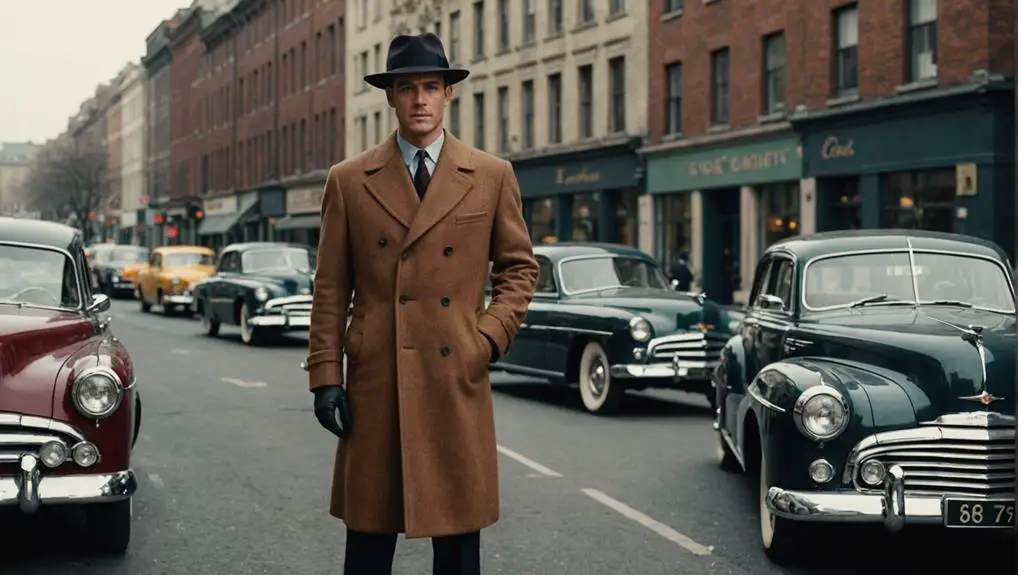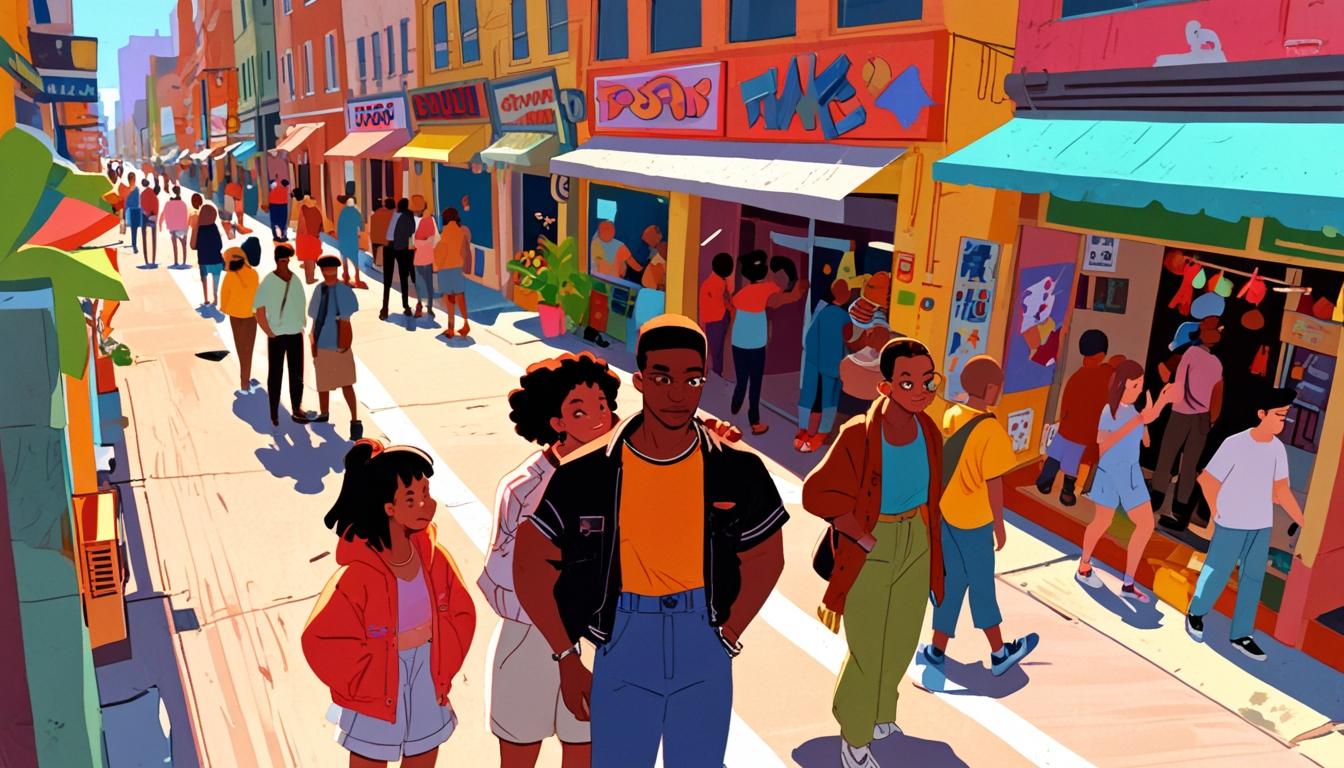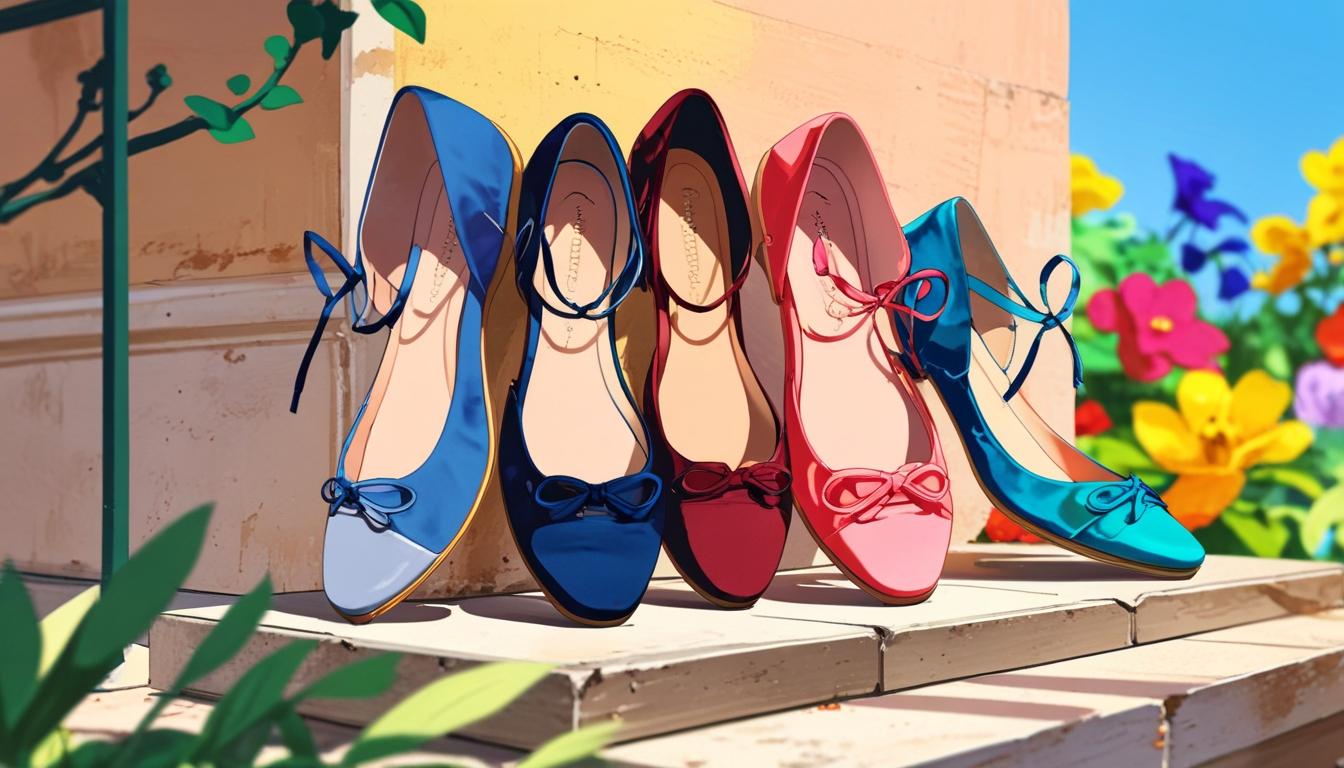In the 1950s, men's coats ceased to be mere garments; they became essential style statements. You'd notice iconic pieces like single-breasted trench coats and stylish belted bush jackets that offered both function and flair. Heavy wool blends, often adorned with herringbone patterns, dominated the fabric landscape, providing warmth without sacrificing sophistication. Exaggerated shoulder-to-waist ratios defined tailored silhouettes, while overcoats featured impeccable craftsmanship with details like double-breasted fronts. These coats weren't just about warmth; they reflected post-war optimism and established a legacy in menswear. If you're curious about how these styles influenced modern fashion, there's plenty more to explore.
Iconic 1950s Coat Styles
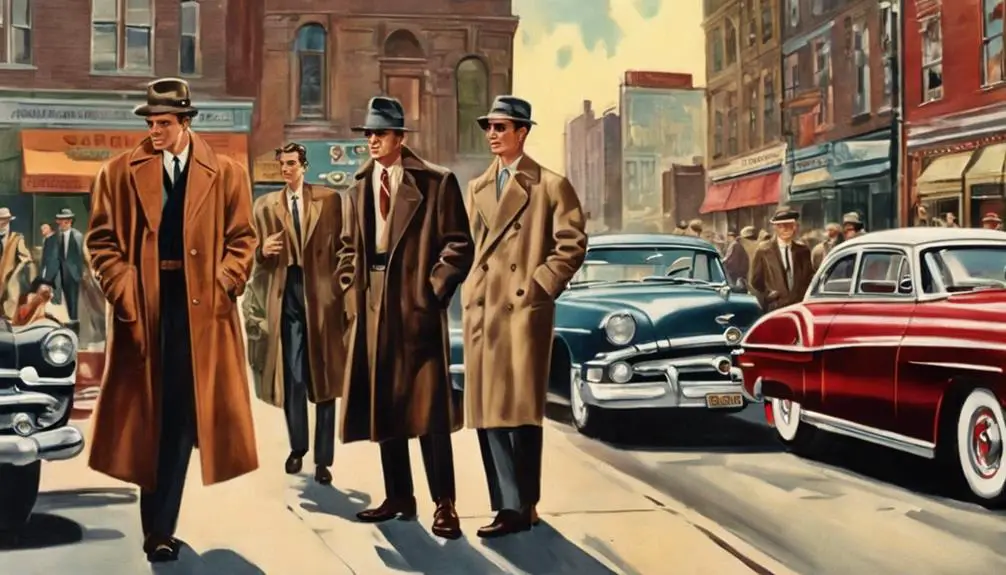
The allure of 1950s coat styles reflects a unique blend of practicality and fashion that defined the era. During this time, you'd often find men sporting single-breasted trench coats, which offered a streamlined silhouette while maintaining functionality. Crafted from durable wool and occasionally leather, these coats were ideal for both formal and casual occasions.
Belted bush jackets and safari coats also gained traction, providing a stylish, relaxed option for daytime wear. These designs emphasized versatility, allowing you to dress them up or down with ease. The double-breasted raincoat emerged as a lighter alternative to traditional overcoats, featuring bold patterns and textured wool fabrics that made a statement.
The crombie coat stood out for its sleek lines and unique detailing, making it a fashionable choice for colder months. Meanwhile, the Ulster coat, known for its 42-button front and distinctive collar, emphasized torso length, showcasing a masculine appeal. Fringed detailing became a defining characteristic of many overcoats, adding a rugged touch to otherwise refined looks. Ultimately, these iconic 1950s styles captured the spirit of the times, merging function with flair in a remarkable way.
Materials and Fabrics Used
During the 1950s, a variety of materials and fabrics played an essential role in shaping men's coat styles. Wool blends became a staple in outerwear, offering warmth and durability while ensuring a polished look. The versatility of wool made it ideal for heavier coats, including the popular Wool Car, which balanced comfort and sophistication. Additionally, the craftsmanship and design elements of this era often reflected the unique characteristics of vintage clothing, showcasing a blend of style and functionality prevalent in vintage clothing trends.
Gabardine jackets emerged as a favored choice due to their tightly woven structure, which provided both wrinkle and water resistance. This lightweight fabric appealed to men seeking stylish outerwear without sacrificing practicality.
Simultaneously, black leather gained prominence, particularly in bomber and motorcycle jackets. Its rugged aesthetic resonated with the rebellious youth culture of the era, embodying a sense of freedom and adventure.
For more casual options, cotton became increasingly popular, especially in shirt jackets, known for their breathability during warmer months.
Fabrics often featured bold patterns like the herringbone pattern and plaid, adding a layer of visual interest and reflecting the dynamic fashion trends of the 1950s. These material choices collectively defined an era characterized by innovation, style, and a keen sense of identity.
Popular Casual Jacket Types
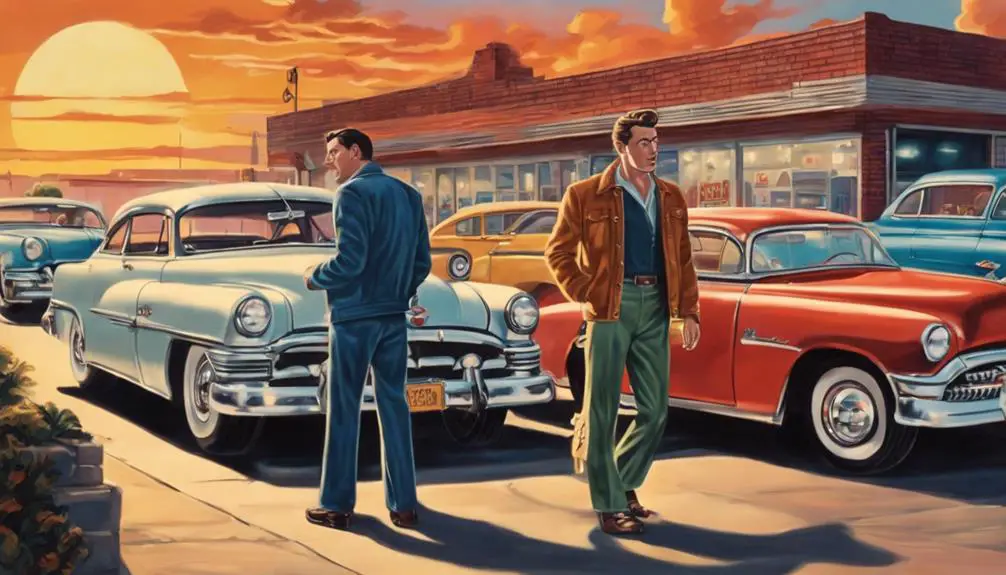
Casual jackets in the 1950s became essential wardrobe staples, reflecting the decade's evolving fashion landscape and cultural shifts. The leather bomber jacket, often crafted in suede or leather, epitomized the rugged aesthetic of greaser culture, symbolizing a rebellious spirit and masculinity. This style not only appealed to youth but also became a canvas for self-expression.
In contrast, leather motorcycle jackets emerged as a definitive choice for those embracing the burgeoning youth counterculture. They signified a break from traditional norms, aligning closely with the era's themes of freedom and defiance.
Meanwhile, shirt jackets gained traction due to their versatility, allowing you to layer easily while maintaining a casual yet polished look. These jackets fit seamlessly into various settings, from casual outings to semi-formal events.
Harrington jackets also became a staple, available in a broad spectrum of colors and sizes. Their lightweight design and tailored fit reflected the era's preference for stylish, approachable outerwear. Today, vintage reproductions of these classic styles, including bomber and varsity jackets, highlight the lasting appeal of 1950s casual jacket designs, proving that good fashion never truly goes out of style.
Overcoat Trends and Styles
As fashion evolved in the 1950s, overcoats stepped into the spotlight, adapting to practicality while retaining an air of sophistication. Knee-length designs became the norm, balancing style with functionality. The decade showcased bold patterns and textured wool fabrics, with heavy, mottled materials dominating the landscape. These choices reflected a desire for both warmth and a stylish appearance during colder months.
You'd find double-breasted raincoats rising in popularity as lighter alternatives, blending practicality with elegance for varied weather conditions. The classic crombie coat emerged as a staple, celebrated for its impeccable tailoring and suitability for bracing climates.
Unique detailing set overcoats apart, featuring exaggerated shoulder-to-waist ratios and raglan sleeve designs that emphasized a tailored yet relaxed silhouette. These design elements not only enhanced comfort but also exuded a certain flair, appealing to the modern man of the time.
Ultimately, the overcoat trends of the 1950s married functionality with style, making it an essential component of men's wardrobes. Such coats exemplified how practical needs could seamlessly intertwine with fashion, ensuring you're prepared for any occasion while looking sharp.
Vintage Vs. Modern Coats
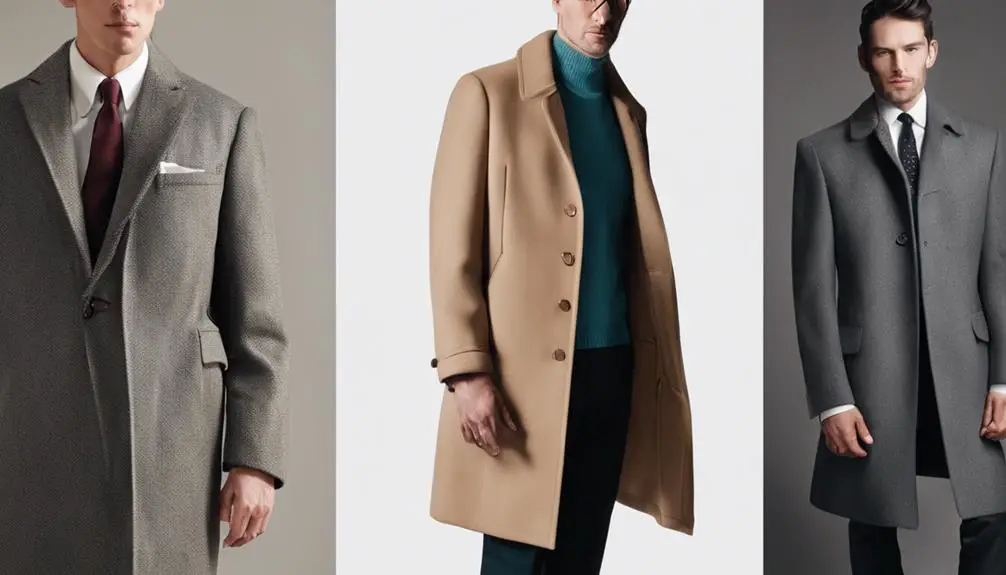
The evolution of men's coats from the 1950s to today highlights a fascinating interplay between vintage inspiration and modern sensibilities. You'll notice that vintage coats, such as those made from Harris Tweed or classic black wool, often featured unique stylistic elements—think exaggerated shoulder-to-waist ratios and heavy, mottled fabrics. In contrast, modern coats emphasize improved fit and materials, offering contemporary interpretations that cater to today's fashion preferences.
Consider these key differences:
- Design Aesthetic: Vintage coats showcase distinctive detailing, while modern styles lean towards minimalism.
- Materials: Vintage options often use heavier fabrics, while modern coats incorporate lightweight, breathable materials for comfort.
- Fit: Modern reproductions provide updated cuts that enhance wearability, compared to the bulkier fits of the past.
- Popularity: Styles like Harrington and bomber jackets continue to thrive, reflecting the lasting influence of 1950s mens fashion.
While vintage coats are treasured for their authenticity, the modern variations capture the essence of classic designs while ensuring practicality and comfort for today's discerning wearer.
Notable Features of 1950s Coats
In the world of men's fashion, the 1950s coats stand out for their distinctive features that define the era's style. The exaggerated shoulder-to-waist ratios created a striking silhouette, emphasizing broad shoulders and tapered waists. You'll notice that heavy wool blends were the fabric of choice, often adorned with classic patterns like herringbone, providing both warmth and sophistication.
Unique design elements, such as raglan sleeves, offered a relaxed fit and enhanced ease of movement. Among the most notable styles was the double-breasted raincoat, a practical yet fashionable option for unpredictable weather. Classic overcoat designs often included details like Ulster collars and a 42-button front, showcasing the meticulous craftsmanship of the time.
Here's a quick overview of these features:
| Feature | Description |
|---|---|
| Shoulder-to-Waist Ratio | Emphasized broad shoulders, tapered waists |
| Fabric | Heavy wool blends with herringbone patterns |
| Sleeve Type | Raglan sleeves for a relaxed fit |
| Style | Double-breasted raincoat for practicality |
| Design Detail | Ulster collars and 42-button front |
These elements collectively illustrate why 1950s men's coats remain iconic in fashion history.
Accessories to Complement Coats

Accessories play an essential role in enhancing the overall appeal of men's coats, particularly in the stylish context of the 1950s. During this era, the right accessory could transform a simple black jacket into a statement piece. The following items were particularly popular:
- Vintage Gray Leather Gloves: These gloves provided a sophisticated alternative to traditional colors, perfectly complementing various suit shades and boosting the ensemble's elegance.
- Pocket Squares: A vibrant pocket square added a splash of color and personality to any coat, elevating the formal appearance and showcasing attention to detail.
- Hats: Fedoras and trilbies weren't just functional; they added an extra layer of style, enhancing the coat's silhouette and completing the look with flair.
- Scarves: Silk or wool scarves added texture and warmth, offering a fashionable way to express personal style while draping gracefully over classic overcoats.
Incorporating these accessories not only showcased individual taste but also highlighted the era's emphasis on polished, sophisticated looks. So, next time you reach for a coat, consider how these accessories could enhance your overall style.
Frequently Asked Questions
What Jackets Were Popular in the 50s?
In the 50s, you'd see black leather bombers, lightweight gabardine jackets, two-tone letterman styles, and rebellious suede or leather motorcycle jackets. Shorter options like Harringtons and vintage rockabilly jackets also reflected the decade's casual, stylish vibe.
What Type of Clothing Was Popular for Men in the 1950s?
In the 1950s, you'd notice men embracing tailored suits, casual button-up shirts, and fitted trousers. The era celebrated a polished look, blending classic styles with emerging youth culture, reflecting both sophistication and a rebellious spirit.
Did Men Wear Leather Jackets in the 50s?
Yes, you'll find that men embraced leather jackets in the 1950s, often associating them with rebellion and youth. These jackets, especially bomber styles, became staples for greasers and motorcycle enthusiasts, reflecting the decade's vibrant culture.
Did They Wear Fur Coats in the 1950s?
Yes, you'll find that many men wore fur coats in the 1950s, often as symbols of status. These luxurious pieces, made from mink and fox, reflected the affluent jet set culture of that era.
